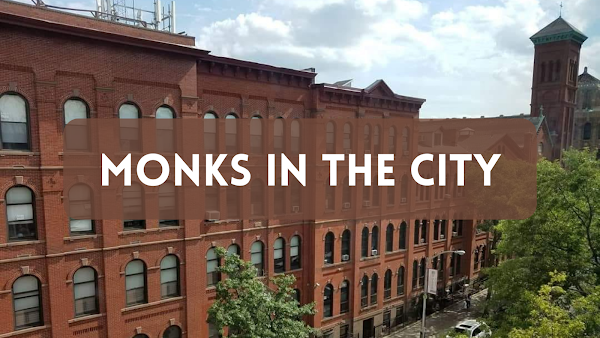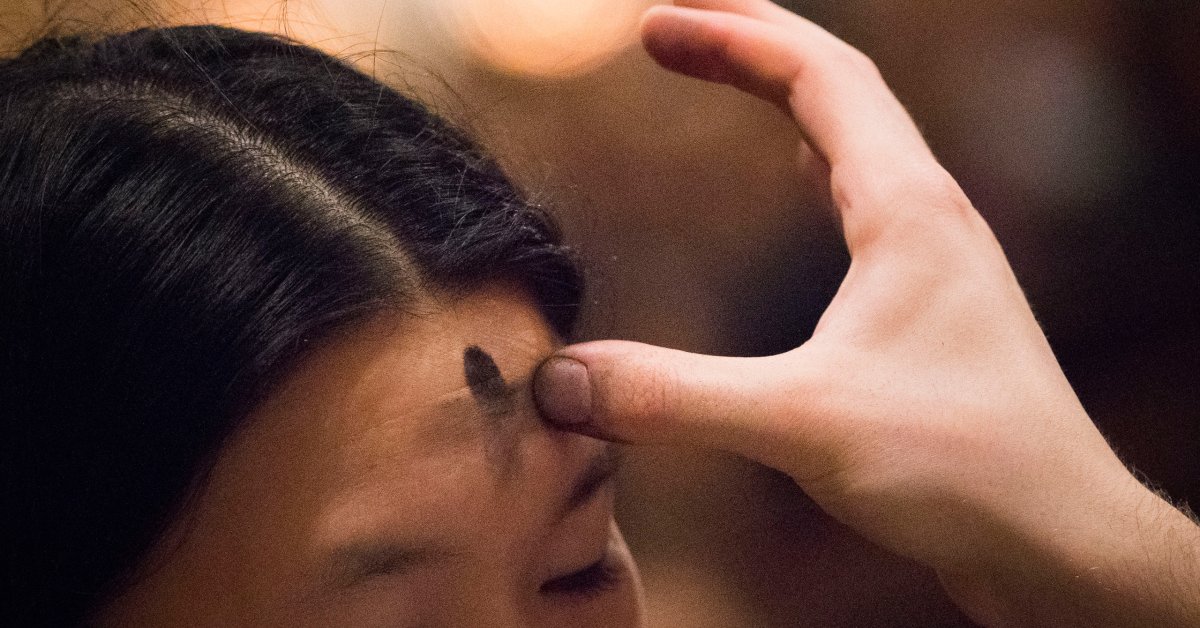It may be I am simply influenced by my American experience, but it seems that there may be something to the sense that September begins a “new year.” Not only is there Labor Day, the ‘unofficial’ end of summer, but there is also the customary opening of a new academic year - for us at St. Benedict's Prep School, the ‘Fall Term’ - and this year 2021, the earlier occurrence of Rosh Hashanah (“the head of the year”), the Jewish New Year holy day, heightens that feeling.
For us, as monks of the Benedictine Abbey of Newark, this 8th day of September also opens another year as it is the anniversary of the election of Abbot Melvin in 1973. On this 48th anniversary, he begins the 49th year of his abbacy.
 |
| Abbot Melvin (seated) and Fr. Luke (standing) |
Likewise today's liturgical celebration of the birth of the Mother of Our Lord Jesus Christ is a “new year” event. The first of September is the Indiction, the beginning of the Church’s year in the Byzantine tradition of Eastern Christianity, and Mary's birthday is situated at this time in the calendar as the beginning of the more proximate unfolding of God's plan for renewing humanity and his creation in the mission of the Son. Mary's birth, as the specially chosen and prepared instrument for God's daring design for the healing of men and women and the world through the Incarnation, is hailed as “the dawn of our salvation” because it means a decisive step forward in the realization of his purpose. The divine “long game” referred to in the chosen Scriptural readings from the prophet Micah (5:1-4a) and from Paul's letter to the Romans (8:28-30) begins implementation.
It was this faith-filled insight that led Pope Sergius, a Syrian, to introduce this celebration to the church in Rome in the 7th century from which it spread to other churches in the West. In the 19th century, the date served to confirm the fixed observance of Mary's conception nine months earlier on the 8th of December.
Speaking of dates and years and events in time affords me the opportunity to reflect with you further in this vein.
Our monastery became an Abbey again by a decree on November 21, 1968, the Presentation of Mary. Yearly, we honor Mary Immaculate, our patroness since our foundation in 1857, on the 8th of December. Our principal work, our apostolate, the School, was forced to “suspend operations” in June 1972, but we re-opened in hope and with renewed purpose on July 2, 1973. Our second abbot was elected in 1973, a time that had the feeling of 'newness' in the midst of uncertainty, and with divine help, determination, no little support from alumni, friends and benefactors, an energetic and enthusiastic headmaster, and a committed and united community, staff and faculty, the intervening nearly fifty years have seen much growth and physical changes, additions, buildings, renovations and enhancements. No one could have foreseen the developments that have ensued. Even at present, challenged by the persistent presence of a pandemic, these continue: the School embraces students from K-12 numbering nearly a thousaand, a Girls’ Prep division was initiated in 2020, the monastic community has welcomed new young members, and two separate but mutually supportive Corporations for monastery and school, respectively, are soon to be formed at the Abbey.
This briefest sketch leads me now to speak about the one celebrating his feast or name day today--in simple truth--because the dramatic outward changes are only part of the story of the last 48 years in which the monk elected by his brothers on this day had a crucial, if not exclusive role.
In my perspective, the operative insight, the guiding principle of the Abbot chosen then was that if Newark Abbey and its chief re-appropriated historic apostolate were to flourish, it had to be a monastery “for real,” as we say here in Brick City. In his teaching (referred to by St. Benedict in his Rule as doctrina) and by his example, Abbot Melvin has unswervingly emphasized and called the monks to the same, while doing as Benedict advised--adapting his teaching and his guidance to “a variety of characters” (I being one)--and yet giving the strong something to strive for, and the weak nothing to shrink from as too hard. For which reason, we owe you, Abbot Melvin, thanks for your shepherd’s care and wish you every blessing on this your double festivity: name day and anniversary.
At some time in the not so distant years, one of our senior monks, Father Boniface, remarked that he thought the community should begin to observe any Saturday on which it was possible to do so as a day to honor Mary in our common prayer, according to an old custom in the Church. Conscious of her care for her Son's disciples as Jesus had requested when he was dying on the cross, we readily agreed. It is a frequent recurring reminder through the year not only of the intercession of the Mother of the Lord for this community in particular and its life and work, but also of her example as a willing participant in God's design. Mary is the shining figure that illumines the mystery of grace: God is always calling and choosing human instruments to accomplish, in diverse times and places, his purpose, while also giving what they need to accomplish it.
This has clearly been the underlying current in the passage of the nearly fifty years of your abbacy. In and with, and by, the working of Providence, and through the gifts of divine grace, and together with the monastic community and the always larger community connected to it, in your vital role and faithful leadership, you have made it possible for us to allow the living Christ to exercise his presence, prolonging the mystery of the Incarnation, just as Mary's 'yes' opened the way for it at the beginning. It may seem incredible to us, but God be praised, we have been told many times and by many people--if in not so exact words--that it is so. The whole has been greater than the sum of its parts. The West African Igbo proverb says: “It is not those who are dancing that one should ask how the dance is going.” Those who have observed the dance, and those who have joined in it, have spoken clearly.
May the example of Mary in her life, by her loving prayer and the amazing power of the Spirit who overshadowed her, continue to empower you and us in the service of Christ the true King and his kingdom here in Newark.




Beautiful reflection on the good work of my old Theology Teacher and a school which is better now, than it was, then.
ReplyDelete